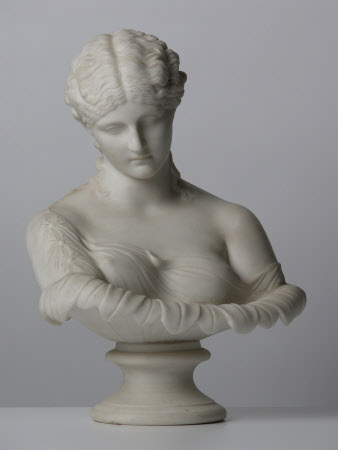Clytie
British (English) School
Category
Art / Sculpture
Date
1835 - 1880
Materials
Marble
Measurements
267 mm (10 1/2 in) (Height)
Place of origin
England
Order this imageCollection
Hughenden, Buckinghamshire
NT 429108
Caption
The original ancient Parian marble sculpture that this is a cast from was acquired from the family of the Principe Laurenzano in Naples by the antiquities collector Charles Townley (1737-1805) during his Grand Tour in 1772. It was one of his favourites. He printed on his visiting card and it was the only piece he took with him when he fled his house during the Gordon Riots in 1780. It features prominently beside him on his desk in Zoffany’s famous 1782 painting of Townley’s collection of statues - which the British Museum bought after his death - at his London house at 33 Park Street, Westminster. A solemn female is emerging from a calyx of leaves. She has long been known as Clytie, the nymph whose unrequited love for the god Helios caused her to turn into a sunflower although scholars have disputed her identity and authenticity. Townley himself later believed her to represent Isis in the flower of Lotus but also often called her his ’wife’. It was a very popular item and much reproduced by sculptors like Joseph Nollekens.
Summary
Parian marble sculpture, Clytie, British School, 19th century. A shoulder-length bust of a woman, hair parted in centre, in classical dress, left shoulder exposed. On round socle. The original Greco-Roman marble is in the Townley Collection at the British Museum. Clytie was an ocean nymph who fell in love with Apollo but when he deserted her she was changed into a sunflower which turns it head to follow the sun on its daily course from east to west.
Makers and roles
British (English) School, artist
